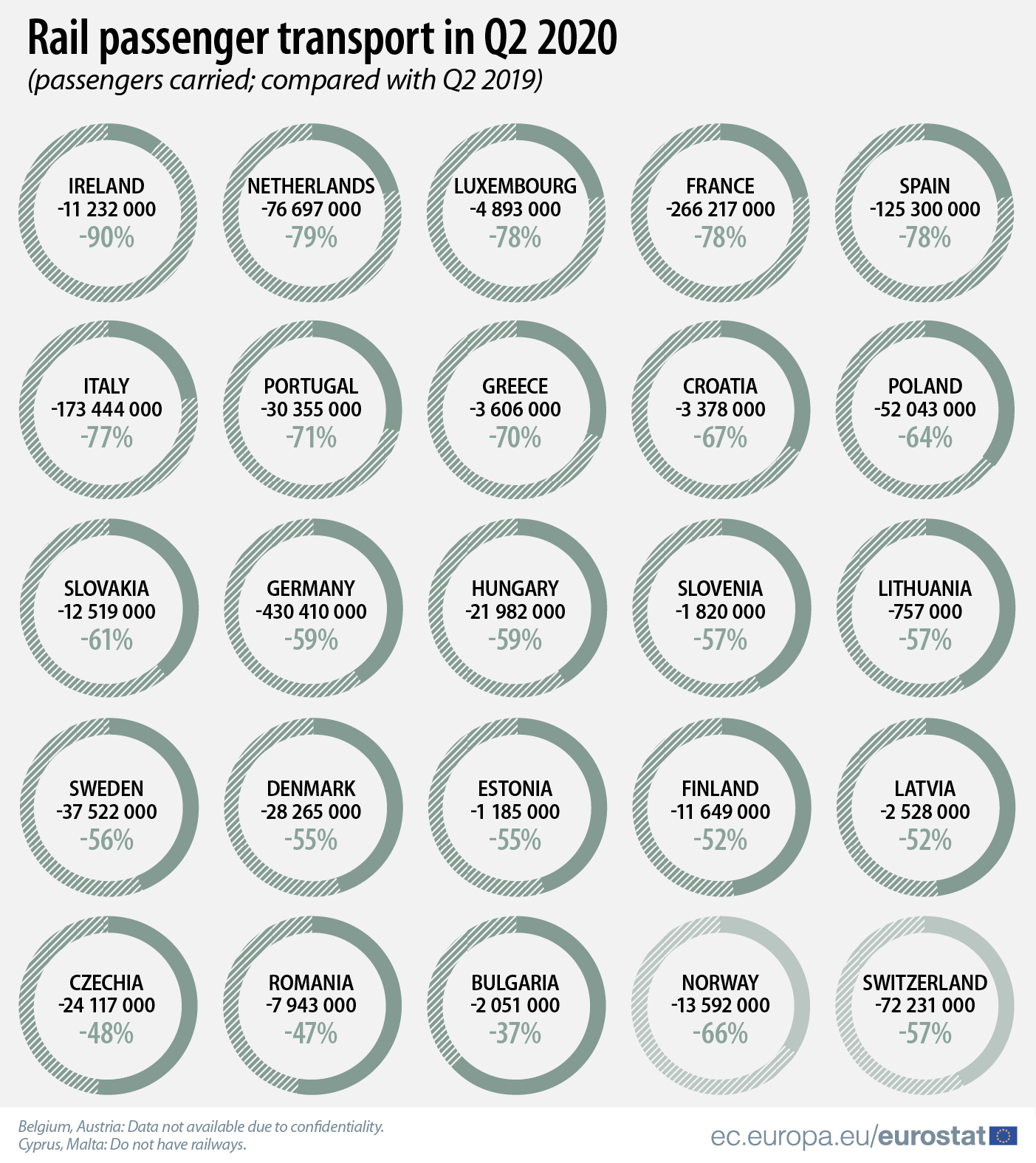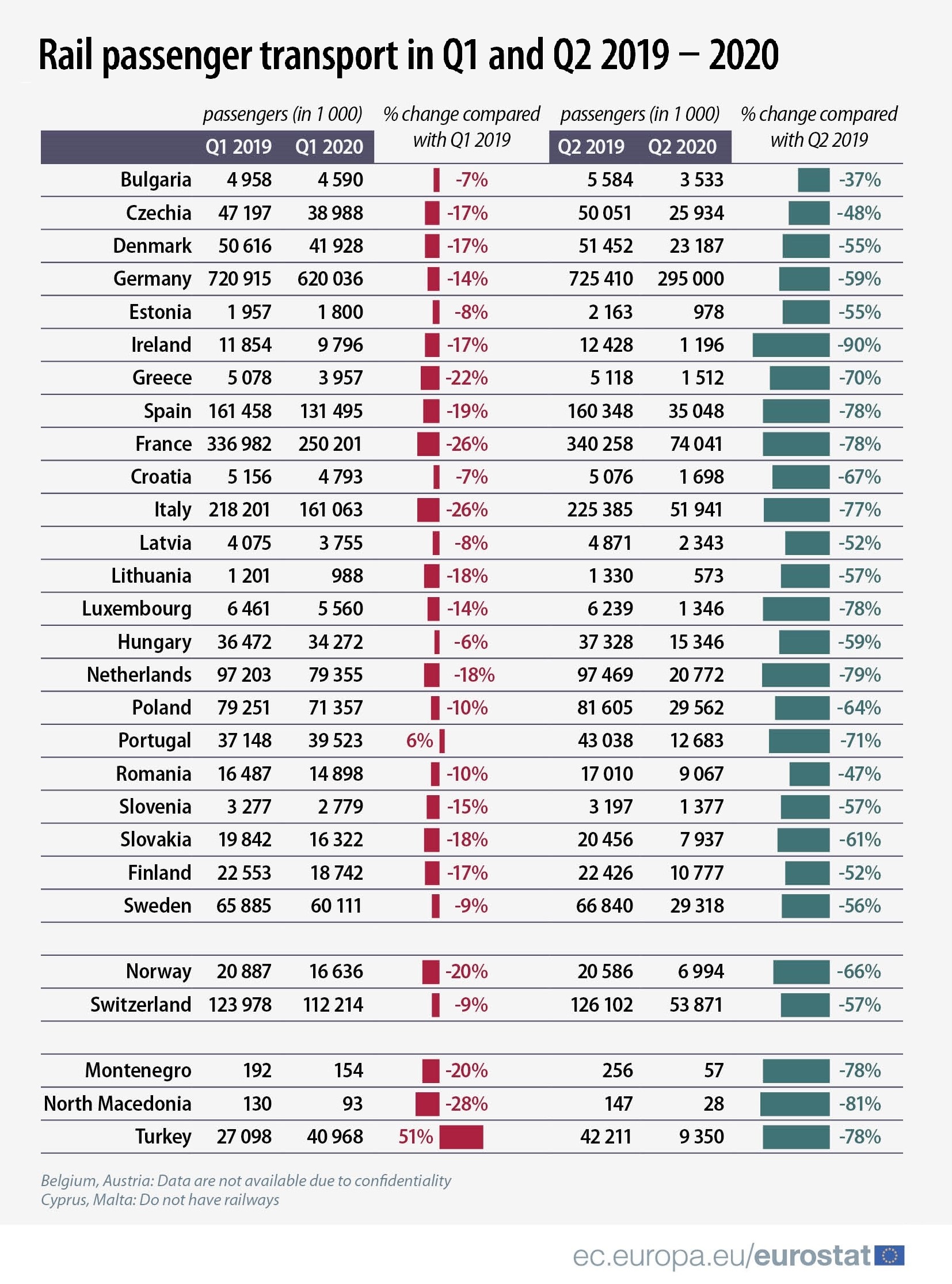Following a significant revision of Dutch data by the Dutch Statistical Office, this news item has been updated on 1 April 2021.
To prevent the spread of the COVID-19 pandemic, countries in Europe have taken a variety of restrictive measures, which have significantly affected rail transport demand. While the numbers of the first quarter 2020 showed the first impact of these restrictions, the impact was even starker in the second quarter.
Compared with the second quarter of 2019, the number of rail passengers at least halved in a vast majority of EU Member States with available data in the second quarter 2020. The largest decrease in number of rail passengers was observed in Ireland (-90%, -11.2 million passengers), followed by the Netherlands (-79%, -76.7 million passengers), Luxembourg (-78%, -4.9 million passengers), France (-78%, -266.2 million passengers), Spain (-78%, -125.3 million passengers) and Italy (-77%, -173.4 million passengers).
Source datasets: rail_pa_quartal
When also considering the length of passenger journeys, the decreases were slightly higher. The decrease in passenger-kilometres was largest in Ireland (-91%), followed by Spain (-87%), Italy (-85%), France (-80%), the Netherlands (-79%), Luxembourg and Portugal (both -78%).
Are you looking for recent data on rail passenger transport in the EU, EFTA or candidate countries?
Source datasets: rail_pa_quartal
To contact us, please visit our User Support page.
For press queries, please contact our Media Support.



